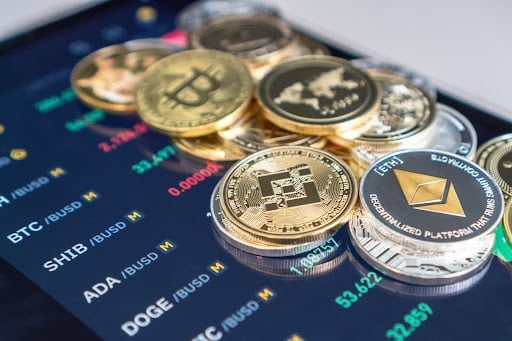Using Your Credit Card — The Surprisingly Smooth Path to Owning Litecoin (LTC)

SPONSORED POST*
Diving into the world of cryptocurrency can feel like stepping into a whole new dimension. But guess what? Getting your hands on Litecoin (LTC) doesn’t have to be an intricate, tech-heavy ordeal. Using a credit card is a familiar off-ramp onto this digital highway, a bridge connecting your everyday spending power to the intriguing future of finance.
While swiping that plastic for crypto offers a certain oh-so-easy vibe for newbies, there’s a little asterisk. Those convenience fees? They tend to be a tad higher than if you went the old-school bank transfer route. But this guide is your roadmap to navigating that first Litecoin purchase without getting lost in the weeds.
Getting to Know Litecoin and Why It Matters
What Exactly is Litecoin?
Picture this: it’s 2011, and Charlie Lee, a former Google whiz, decides to cook up something interesting. Litecoin (LTC) bursts onto the scene, one of the original “altcoins.” Think of it as being built on the sturdy foundations of Bitcoin’s code, but with a few clever tweaks under the hood. For instance, while Bitcoin transactions can take a bit to confirm, Litecoin zips through (in comparison) in roughly 2.5 minutes. Plus, it originally used the Scrypt hashing algorithm, aiming to make mining a bit more accessible back in the day.
They often call Litecoin the “digital silver” to Bitcoin’s “digital gold.” It consistently hangs out in the top ranks of valuable cryptocurrencies. And with a total supply capped at 84 million coins, four times Bitcoin’s limit, it strikes a balance between being somewhat scarce but also having enough “coins” floating around for easier, everyday use.
Why Consider Litecoin?
Why should you even bother with Litecoin? Those faster transaction speeds are not just for show. They mean quicker confirmations, which is pretty handy when you’re actually trying to use your crypto for purchases. When the Bitcoin network gets all clogged up, Litecoin’s network often keeps chugging along with lower fees.
Being one of the elder statesmen of the crypto world, Litecoin offers a certain level of reliability in what can sometimes feel like a super-turbulent market. Plus, you can find it pretty much everywhere in terms of exchanges, and it’s got a pretty active bunch of developers constantly working on it. That makes it feel less intimidating for newcomers, while its limited supply still gives it that potential “store of value” appeal.
Buying Crypto with a Credit Card
Perks and Pitfalls of Credit Card Purchases
Let’s be honest, using a credit card to snag some crypto is like taking the express lane. Boom! Transaction clears almost instantly. No need to fiddle with setting up all sorts of complicated funding methods. For a lot of folks, it just feels… easy.
But hold on a second. That ease comes with a price tag. We’re talking fees that can easily jump to 3-5% or even higher. Ouch! That’s noticeably more than those slower-but-cheaper bank transfers. And here’s a kicker: many credit card companies treat crypto buys like cash advances. Translation? Interest starts piling up immediately, and at those lovely cash advance rates. Yikes! Plus, let’s not forget the biggie – buying something as volatile as crypto with borrowed money? That’s a recipe for potential financial heartburn if Litecoin’s price takes a nosedive. You’ll still owe the full amount, plus that lovely interest.
Understanding KYC Verification
Before you can even think about clicking “buy,” you’ll need to go through Know Your Customer (KYC) verification. Think of it as the digital handshake and ID check all the reputable platforms have to do, thanks to financial regulations around the globe. It’s all about keeping things honest – preventing fraud, money laundering, and those pesky identity thieves. Basically, it protects both the platform and us, the users.
KYC usually involves showing them a government-issued ID, proving where you live, and sometimes even snapping a selfie or doing a quick video call. Make sure those documents are crystal clear and up-to-date to avoid any annoying delays. Depending on how swamped the platform is, verification can be as quick as a few minutes or could stretch out to a few days.
Sometimes, when you buy Litecoin with credit card, you can skip this step but this mostly works when you are not buying much in the first place.
Buying Litecoin with a Credit Card Step-by-Step
Choosing a Reputable Exchange
Alright, first things first: picking the right exchange is crucial. You want a platform that’s like a digital fortress – strong security features are non-negotiable. Think two-factor authentication (2FA), keeping most of their digital goodies in cold storage (offline), and even having some insurance in case of a breach. Also, double-check that the exchange is actually licensed to operate where you are. That gives you some recourse if things go sideways.
Then, think about you! Is the website or app easy to use? Are the fees laid out clearly? And what’s their customer support like if you hit a snag? Big players like Coinbase, Binance, and Kraken all let you buy with credit cards, but their fees and verification steps can vary. Do a little digital window shopping!
Creating Your Account and Verification
- Sign Up: Head over to the exchange’s website or download their app. You’ll need to punch in your email address and come up with a super-strong password. Then, keep an eye on your inbox for a verification link – click that to confirm your email.
- Enable Security: Seriously, do this immediately. Set up Two-Factor Authentication. This usually involves using an authenticator app on your phone that generates these constantly changing codes. It’s like adding an extra deadbolt to your digital front door.
- Begin Verification: Look for a “Verification” or “Account” settings section. Most exchanges have different levels of verification. The more info you provide, the more features you usually unlock.
- Submit Documents: Time to upload those clear photos of your government-issued ID and proof of address (like a utility bill). Some platforms might even ask for a selfie or a quick video to confirm it’s really you.
Keep in mind that verification times can vary. You might get access to some basic features right away, but buying with a credit card usually requires the full verification to be complete.
Linking Your Credit Card
Now, find the “Payment Methods,” “Add Funds,” or “Wallet” section. There should be an option to add a new payment method. This is where you’ll carefully enter your credit card details: the long number, expiry date, the CVV code on the back, and your name as it appears on the card. You’ll likely have to go through 3D Secure authentication, which usually involves getting a one-time code via your bank’s app or a text message.
Quick heads-up: remember how we talked about banks treating crypto as cash advances? Double-check your bank’s policy before you link your card. Some banks might slap you with those immediate interest charges, and some might even block crypto transactions altogether. Better to know beforehand!
Navigating to Buy Litecoin
Once you’re verified and your card is linked, it’s time to find where the magic happens. Look for a prominent “Buy/Sell” button on the main dashboard or in your wallet section. Click that and then select Litecoin (LTC) from the list of available cryptocurrencies. Most platforms will have a pretty straightforward interface for buying.
Entering Purchase Details
Here’s where you tell the platform how much Litecoin you want. Usually, you have a couple of options:
- Enter the fiat amount: You type in how many dollars (or euros, or whatever your local currency is) you want to spend, and the platform will automatically calculate how much LTC you’ll get based on the current exchange rate.
- Enter the LTC amount: If you know exactly how much Litecoin you want, you can type that in, and the platform will tell you how much it will cost in your local currency.
Before you hit that “confirm” button, take a really close look at the transaction summary. It should show you the amount of Litecoin you’re buying, the exchange rate they’re using, all the fees they’re charging, and the final amount of LTC that will land in your wallet. Remember, crypto transactions are usually irreversible, so double-check everything!
Confirming Your Transaction
Alright, you’ve reviewed everything and you’re good to go? Click that “Buy LTC” or “Confirm Purchase” button. You might get one last security check from your bank through that 3D Secure thing again.
Once it’s approved, you should see a confirmation message, and your shiny new Litecoin will usually show up in your exchange wallet within a few minutes. Sometimes it might show as “pending” for a little while as the transaction settles.
Choosing the Right Platform Wisely
Selection Checklist
When you’re playing the exchange selection game, keep these things in mind:
- Security Fundamentals: This is non-negotiable. Mandatory 2FA, most funds chilling in cold storage, and some kind of insurance against breaches are must-haves.
- Fee Transparency: Dig into those fees! Compare transaction fees, the rates they use to convert your money, and what they charge when you want to withdraw your crypto. Hidden fees can really eat into your returns.
- User Experience: Is the platform easy to navigate? Do they have helpful guides or FAQs? What’s their customer support like if you run into trouble?
- Regulatory Compliance: Make sure the platform is operating legally in your neck of the woods and supports your local currency.
- Reputation: Do a little digging. How long have they been around? What’s their security track record? Who’s running the show?
Red Flags to Heed
Keep your eyes peeled for these warning signs:
- Promises of unbelievably high, guaranteed returns. If it sounds too good to be true…
- A lack of clear information about where they’re located, who’s in charge, or what regulations they follow.
- Shady security practices or a history of getting hacked.
- Lots of users complaining about not being able to withdraw their funds.
- A website or app that looks super unprofessional or glitchy.
Managing Risks and Security
Understanding Volatility
Let’s not sugarcoat it: Litecoin, like all its crypto cousins, can be a wild ride in terms of price. You can see prices jump up or plummet by 20-30% in a really short time. Market buzz, news about regulations, the overall economy, and even what people are saying on social media can all send prices swinging.
Given this rollercoaster, only put in what you can genuinely afford to lose. Steer clear of buying crypto with borrowed money. And consider something called dollar-cost averaging – basically, buying a small amount regularly, no matter the price, to smooth out those market ups and downs.
Securing Your Litecoin
While the reputable exchanges have pretty good security, they’re still big targets for hackers. The golden rule in crypto is “not your keys, not your coins.” What that means is, if your Litecoin is sitting on an exchange, you don’t actually control the private keys that prove you own it. So, it’s still potentially vulnerable to breaches, account hacks, and even regulatory hiccups.
For better security, especially for larger amounts you’re planning to hold onto, think about moving them to your own personal crypto wallet:
- Custodial Wallets: These are managed by someone else, kind of like keeping your money in a bank. They’re convenient but give you less direct control.
- Non-Custodial Wallets: With these, you’re in charge of your private keys. More secure, but you need to be extra careful not to lose them.
- Software Wallets: These are apps you can get on your phone or computer, like Exodus or Trust Wallet.
- Hardware Wallets: These are physical devices, like Ledger or Trezor, that store your private keys offline – super secure.
A lot of people use a mix: keeping a bit on an exchange for trading and moving the bulk to a hardware wallet for long-term storage.
Credit Card Issuer Policies
One last thing to keep in mind before you buy: check with your credit card company about their rules on cryptocurrency purchases. A lot of them treat these transactions as cash advances, which means:
- You start getting charged interest right away, no grace period.
- The interest rates are often higher than for regular purchases.
- They might have lower limits for these kinds of transactions.
- You might not earn any rewards points or cashback.
Some banks even flat-out block crypto transactions or might flag them as suspicious, potentially freezing your account temporarily. It’s always best to know what you’re getting into beforehand.
Beyond the LTC Purchase
Exploring Litecoin Use Cases
While a lot of people see Litecoin as an investment, it’s also designed to be used for payments. With those faster transaction times and lower fees, it’s actually pretty good for everyday purchases.
And the ecosystem is growing! Payment processors like BitPay are making it easier for merchants around the world to accept Litecoin. Travel sites like Travala.com let you book trips with LTC. And platforms like Bitrefill let you convert your Litecoin into gift cards for hundreds of different retailers, bridging the gap between crypto and your daily shopping.
Staying Informed
The world of crypto moves fast, so it’s a good idea to stay in the loop. Follow reputable news sources like CoinDesk, Cointelegraph, and the official Litecoin Foundation blog for the latest industry news and project updates. Tools like CoinMarketCap or TradingView can give you the lowdown on prices, trading volumes, and technical analysis. Good information is the bedrock of any smart cryptocurrency strategy.
Conclusion
Buying Litecoin with a credit card offers a convenient entry point into the world of cryptocurrency, especially if you’re just starting out. By choosing your exchange wisely, getting through the verification process, understanding the fees involved, and taking your security seriously, you can navigate this process with confidence and invest responsibly.
But remember, your Litecoin journey doesn’t end after you click “buy.” Think about how you’re going to store your coins securely, keep yourself informed through reliable sources, and explore the different ways you can actually use your Litecoin. The cryptocurrency landscape is constantly evolving, and the folks who stay informed, adapt to changes, and prioritize security are the ones who will thrive in this exciting new financial frontier.
*This article was paid for. Cryptonomist did not write the article or test the platform.




